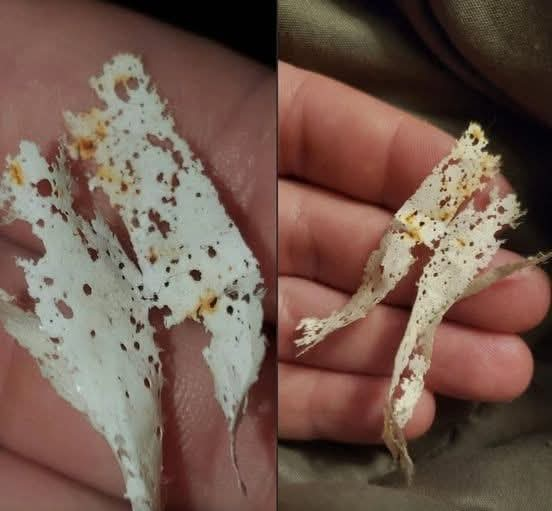Strange White Fibers in Your Water? Here’s What It Really Means
You turn on your tap and notice something unsettling—thin, white fibrous strands floating in your water. Maybe you also spot some reddish-brown sediment. Before you panic, know this: you’re not alone. Many homeowners have encountered this mysterious issue, and though it can be alarming, understanding what causes it is the first step toward fixing it.
This strange debris might look like shredded paper or plastic, often mixed with rusty flakes. It can appear in your drinking water, in your shower, or even inside your kettle or coffee maker. And while it may look like a plumbing horror story, there are a few common causes—and effective solutions—you should know.
What Is the White Fibrous Material?
These particles are usually not biological and not dangerous, but they can be signs of a larger issue in your plumbing system—especially your water heater. Here’s a detailed look at the top causes.
1. 🔥 Disintegrating Dip Tube in the Water Heater
One of the most frequent culprits is the dip tube, a long plastic pipe inside your water heater that sends cold water to the bottom of the tank to be heated.
Over time, especially in older water heaters made before the early 2000s, the plastic used for these dip tubes can degrade due to prolonged heat exposure. As the tube breaks down, it releases tiny, white, fibrous plastic fragments that get carried into your plumbing system and show up at your taps.
✅ Important: Even if your current water heater is new, debris from a previously installed old heater may still be lurking in your system. These fragments can get trapped in filters, screens, faucet aerators, or behind valves—and they won’t go away until the entire system is properly flushed.
2. 🧲 Rust and Sediment from a Failing Water Heater
If you’re noticing rusty flakes along with the white fibers, your water heater might be corroding from the inside. Water heaters contain various metal parts that can break down with age, such as:
- Ball bearings
- Heating elements
- Anode rods
As these components corrode, they release iron oxide (rust) and gritty sediment, which mixes with the disintegrating plastic to create an unappealing mess in your water supply.
🚨 Warning Sign: If you hear popping or crackling sounds from your heater or notice your hot water running reddish or cloudy, sediment buildup may already be affecting performance—and your plumbing.
Pipe Coating Breakdown in Aging Systems
In some older homes or buildings with chemically treated water, interior pipe linings or coatings made of plastic or epoxy can begin to degrade over time. As these coatings break down, they release plastic-like strands or slivers, sometimes mimicking the appearance of dip tube debris.
This type of breakdown is less common than heater damage but can occur in systems where:
- Water is unusually hot or chemically “aggressive”
- Pipes are exposed to extreme temperature fluctuations
- The original plumbing used lower-grade or now-banned materials
4. 🌿 Invasion by Organic Matter or Roots (Rare But Possible)
If your home has older underground pipes, especially clay or cast-iron ones, tree roots can sometimes infiltrate through cracks and joints. Once inside, they create tiny root hairs that break off and enter the water supply, appearing as fibrous debris.
🌳 While this usually affects outdoor plumbing or garden spigots, in some cases it can find its way indoors—particularly in homes with neglected or damaged sewer lines connected to older municipal systems.
How to Eliminate White Fibrous Debris and Restore Clean Water
Now that you understand what might be causing the white, thread-like material and rusty particles in your water, it’s time to tackle the problem directly. With a few strategic steps—and, in some cases, professional help—you can eliminate the debris and protect your plumbing for years to come.
🌀 Step 1: Flush Your Plumbing System
Begin by removing all faucet aerators, screens, and filters from your taps, showers, and appliances like dishwashers and washing machines. Then, follow these steps:
- Run hot water from each fixture for 5–10 minutes to flush out any remaining dip tube fragments or rust sediment.
- Open and close nearby valves to create pressure changes that dislodge particles trapped in corners and bends of the system.
- Repeat flushing over several days if the issue is widespread.
⚠️ Focus especially on hot water lines, since they are directly impacted by your water heater.
Step 2: Clean or Replace Filters and Valves
Tiny plastic strands and rust can build up behind valve seals and inside filter housings, reducing water flow and contaminating your supply.
✔️ Clean or replace:
- Showerhead filters
- Appliance inlet screens
- Sink aerators
- Under-sink water filters
📌 Tip: If you’re seeing debris repeatedly in the same fixture, it’s likely there’s a nearby obstruction or buildup.
🔥 Step 3: Inspect the Water Heater
If your water heater is more than 10–15 years old, or if you suspect a broken dip tube, a professional inspection is a smart move.
A plumber may recommend:
- Replacing the dip tube
- Flushing or draining the tank to remove sediment
- Replacing the entire unit if it’s nearing the end of its lifespan
🛠 In some cases, a full system flush or even partial repiping may be necessary, especially if your plumbing contains persistent deposits from a long-gone problem.
Step 4: Prevent Future Problems
Once the current debris is cleared out, protect your water quality by:
- Scheduling annual water heater maintenance
- Installing whole-house sediment or carbon filters
- Keeping your plumbing system updated and inspecting older pipes
You might also consider water testing—especially if you suspect chemical issues, abnormal hardness, or organic matter.
🧾 Final Thoughts
White fibrous material in your water—especially when combined with rust—is more than just a cosmetic issue. It’s a warning sign that your water heater or plumbing system may be deteriorating, and acting early can save you major headaches (and plumbing bills) down the line.
🔧 While basic flushing can solve the problem for many, persistent or recurring debris should always be checked by a licensed plumber. A proper diagnosis could reveal early corrosion, hidden blockages, or failing components that need attention.
💬 Have you seen this in your own water? Share your experience in the comments.
🔁 Tag a friend who’s dealing with weird tap water lately—this could explain everything.
📌 Save this post for later if you’re about to do home renovations or replace your water heater.





